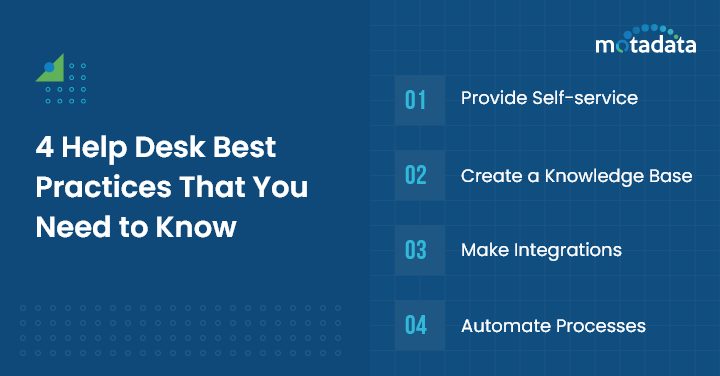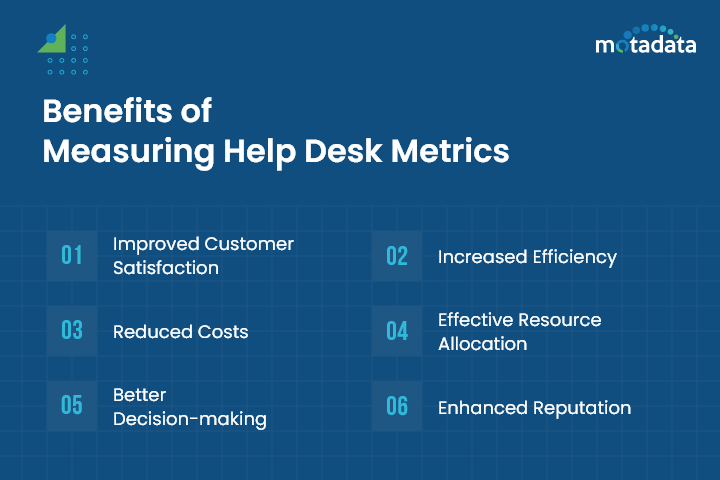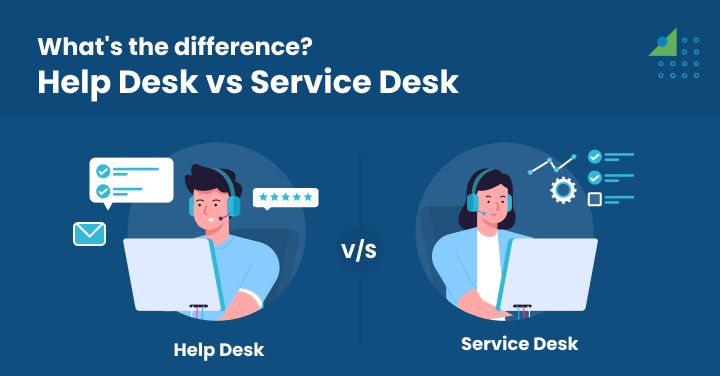Does your business have a help desk in place? Are you tracking its performance? Knowing which metrics and KPIs to measure can differentiate success and failure. This article will explore the essential helpdesk metrics and KPIs and how they can help you optimize customer service.
The help desk is responsible for providing support to employees and customers who need assistance with technical issues. The goal of the help desk is to resolve problems quickly and efficiently so that users can get back to work as soon as possible. Therefore, tracking various metrics and KPIs for the help desk is essential to ensure it meets the goals.
What is a Help Desk?
A help desk is a central point of contact between a company and its customers. It is responsible for supporting customers who have questions or need assistance with the company’s products or services. The help desk can be reached by phone, email, or live chat.
Help desks are essential because they allow companies to interact with and support their customers. By measuring help desk performance, companies can identify areas where they need to improve their customer service. Also, measuring help desk performance can help companies track customer satisfaction levels.
Read More: The Evolution of the Helpdesk and Where it is Going
What Are Help Desk Metrics and KPIs?
To maintain and improve the performance of your help desk, it is essential to measure key performance indicators (KPIs) and metrics. KPIs are quantifiable measures that help you evaluate the success of your help desk in achieving its objectives. Common KPIs for help desks include first contact resolution rate, average handle time, and customer satisfaction.
Metrics, on the other hand, are more qualitative in nature and provide insights into trends and patterns in help desk performance. Some common help desk performance metrics include the number of tickets by issue type, ticket volume over time, and ticket age distribution. By tracking KPIs and metrics, you can identify areas of improvement for your help desk and take steps to address them.
Top 7 Help Desk Performance Metrics & KPIs
1. Average First Call Resolution (AFCR): This metric measures the percentage of help desk tickets resolved on the first contact with the customer. A high AFCR indicates that customers can resolve their issues quickly and efficiently.
2. Average Handle Time (AHT): This metric measures the average time a help desk agent takes to resolve a ticket from start to finish. A shorter AHT indicates that agents are resolving tickets more quickly and efficiently.
3. Customer Satisfaction (CSAT): This metric measures the level of satisfaction that customers have with the help desk service they receive. A high CSAT score indicates that customers are happy with the assistance they receive and are likely to continue using the help desk.
4. Net Promoter Score (NPS): This metric measures customers’ likelihood of recommending the help desk to others. A high NPS score indicates that customers are satisfied with the service they receive and are likely to promote it to others.
5. First Contact Resolution Rate (FCRR): This metric measures the percentage of help desk tickets resolved on the first contact with the customer. A high FCRR indicates that customers can resolve their issues quickly and efficiently without waiting for multiple contacts or follow-up calls.
6. Query Volume: This metric measures the number of customer queries the help desk receives over time. This metric can be used to measure the workload of the help desk team and identify spikes in demand.
7. Resolution Time: This metric measures the average time to resolve a customer query. A low-resolution time indicates a quick and efficient response from the help desk team.
4 Help Desk Best Practices That You Need to Know
1. Provide Self-service
Self-service portals allow users to create their own service tickets much faster, allowing your agents to focus on more pressing tasks rather than constantly creating tickets.
2. Create a Knowledge Base
It provides agents with a resource guide to use when solving problems. Steps can be copied and sent to customers to save time.
3. Make Integrations
Your help desk should be able to integrate with apps such as social networking and productivity to provide your team and customers with a more efficient experience. Integrating your help desk with CS software can also streamline your team’s workflow and enhance customer support.
4. Automate Processes
It makes sense to automate everything you can since automated workflows provide invaluable benefits. For example, you can use chatbots to categorize and distribute incoming service requests, resulting in quicker response times.
Benefits of Measuring Help Desk Metrics
A practical help desk is crucial to the success of any business. By measuring the performance of your help desk, you can ensure that it is running smoothly and efficiently.
There are many benefits to measuring help desk performance, including the following:
1. Improved Customer Satisfaction: By measuring help desk performance, you can identify areas where customers need to be adequately served. This allows you to make changes to improve customer satisfaction.
2. Increased Efficiency: Measuring help desk performance can help you identify areas where the help desk wastes time or resources. This allows you to make changes to improve efficiency.
3. Reduced Costs: By improving the efficiency of your help desk, you can reduce operational costs.
4. Effective resource allocation: Measuring help desk performance can help you allocate resources more effectively and make decisions about staffing and training.
5. Better Decision-making: Measuring help desk performance provides data to make informed decisions about improving the help desk.
6. Enhanced Reputation: A well-run help desk enhances the company’s overall reputation.
4 Tips on How to Select the Correct Help Desk KPIs for Your Business
There are a few elements to consider when choosing the right KPIs for your business. The first is to decide which aspects of your help desk’s performance you want to measure. This could include response time, customer satisfaction, or first contact resolution rate.
Once you’ve decided what to measure, you must choose the right KPIs to give you the most accurate picture of your help desk’s performance. This could mean different things for different businesses, but some general tips include:
- Make sure your KPIs align with your business goals. If you’re improving customer satisfaction, choose KPIs focusing on that metric.
- Make sure your KPIs are actionable. In other words, they should be something you can do if they need to meet your targets.
- Make sure your KPIs are measurable. This seems like a no-brainer but ensuring that whatever KPI you’re tracking can be measured accurately is essential.
- Make sure your KPIs are relevant. Choose KPIs that will give you insights into your help desk’s performance and how to improve it.
These tips help you choose the right KPIs for your business and get the most out of tracking them.
Conclusion
Measuring and tracking your help desk’s performance is essential to ensure it remains efficient and effective. You can ensure that your customers are being taken care of promptly by monitoring key metrics such as customer satisfaction scores, response times, resolution rates, etc. Keeping an eye on these KPIs will also allow you to identify areas for improvement to continue providing excellent customer service.
When it comes to performance measurement and ensuring the health of your service desk, it pays to have the capability to implement metrics – and that’s exactly what our robust ITSM solution provides!
With our reporting module, you can easily generate detailed reports and get meaningful analytics to view your IT service desk performance comprehensively. Plus, we offer a 30-day free trial – so why not try? Click now!








